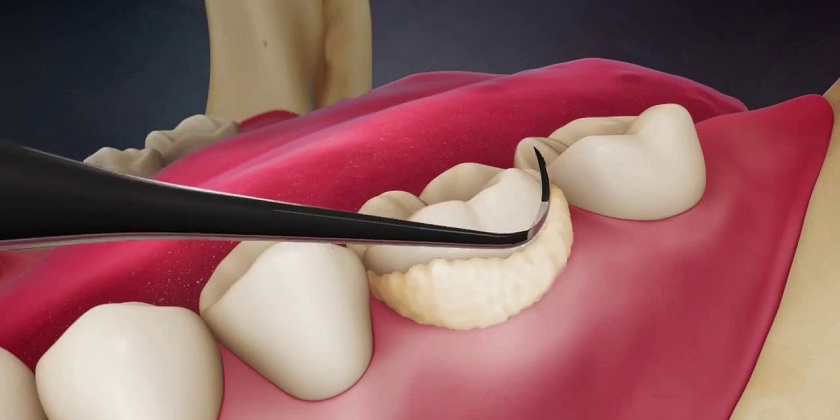- Home
- Scaling/Polishing

Scaling and polishing are two of the most common dental procedures intended for prophylaxis (or prevention of disease).
Everyone is advised to brush their teeth at least three times a day or after every meal to avoid teeth damage. However, there are cases where plaque and tartar buildup still occurs.
This happens because the mouth and the teeth have bacterial film. The saliva contains calcium needed by the teeth to keep them strong and healthy. As a person eats food, the food is converted into starch or sugar, which then combines with bacteria. As this cycle continues, the teeth are placed in a more acidic environment, which can cause stains and damage to the enamel and even the roots.
It is important, therefore, that regular brushing is complemented by a more thorough dental cleaning such as scaling and polishing.
Scaling is a dental process that involves removing the calculus deposits or stains on the teeth. It can be likened to scraping peeling paint on the wall.
Although scaling is performed on the teeth, it can also be applied to the roots particularly in cases when periodontal pockets have already formed. This happens when the bacteria have already invaded the gums. This process is known as root planing.
Polishing, on the other hand, is the process of smoothing the teeth as scaling can make the teeth feel rough. During this time, the dentist may also provide additional protection to the teeth by applying a small amount of fluoride.
For the past years, experts have argued over the necessity of polishing. Some of them believe that it should be performed only when it is absolutely necessary. Otherwise, the teeth should not be subjected to too many abrasive tools to avoid further damage. Patients, therefore, are advised to talk to their dentist to help them weigh the pros and cons before undergoing the dental procedure.
Who should undergo and expected results
People of varying ages should consider undergoing scaling and polishing to achieve optimum oral health. Once the damage starts setting in, a more complex dental procedure may have to be carried out.
Nevertheless, those who are already showing signs of disease may still proceed with the procedures as these can delay the progression or even halt the disease for a very long time. One of the common symptoms of gum disease is bleeding particularly when brushing the teeth.
A person who's suffering from bad breath may think about deep cleaning with scaling and polishing. Bacteria may release certain substances due to their metabolic function and, in turn, cause bad breath. Sometimes bad breath or halitosis is a sign of gum disease.
Depending on the severity of the stains and the position of the teeth, the procedure may take one or a few thorough cleaning sessions before the expected results can be achieved. There may be some minor discomfort especially if an ultrasonic instrument is used during scaling. There may be numbness of the teeth and discomfort on the jaw due to prolonged opening of the mouth. It may take at least an hour to complete the procedure.
How the procedure works
The procedure may begin by applying a local anesthetic to the gums and teeth to minimize discomfort. The dentist then uses a variety of instruments for scaling.
The dental hygienist usually begins with an ultrasonic instrument that sends vibrations to the teeth to loosen the more visible and large deposits. The instrument emits cooling mist made of water to wash the debris away as the procedure goes on. The patient may be asked to spit once in awhile to expel the deposits.
Once the big deposits have been removed, the dentist may then shift to hand scalers, which are available in different sizes. Although using them may extend the procedure time, they give the dentist more control as they can reach deeper areas that cannot be reached by the ultrasonic instrument. They can also be used to knock down smaller deposits, particularly those lodged in between teeth.
After scaling is completed, the dentist may then proceed with polishing using a handpiece equipped with a cup filled with soft rubber. The paste, which is usually made of fluoride, is then placed on the rubber cup. The dentist the rubs and moves the handpiece on the teeth, smoothing the newly cleaned areas.
The patient may then go back to regular activities, though he or she may not be allowed to eat or drink during the first 30 minutes to an hour.


